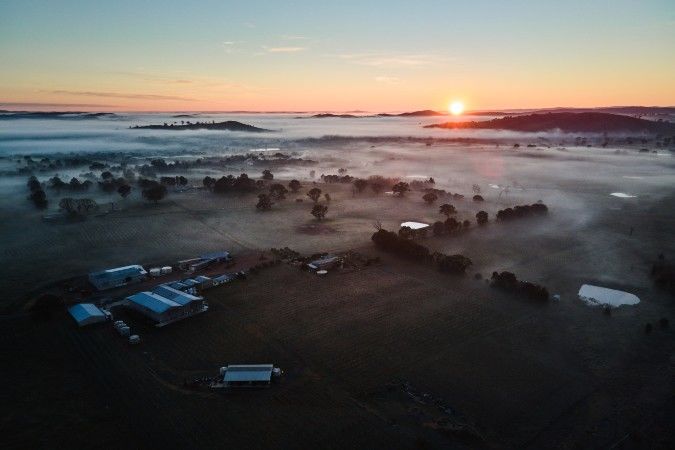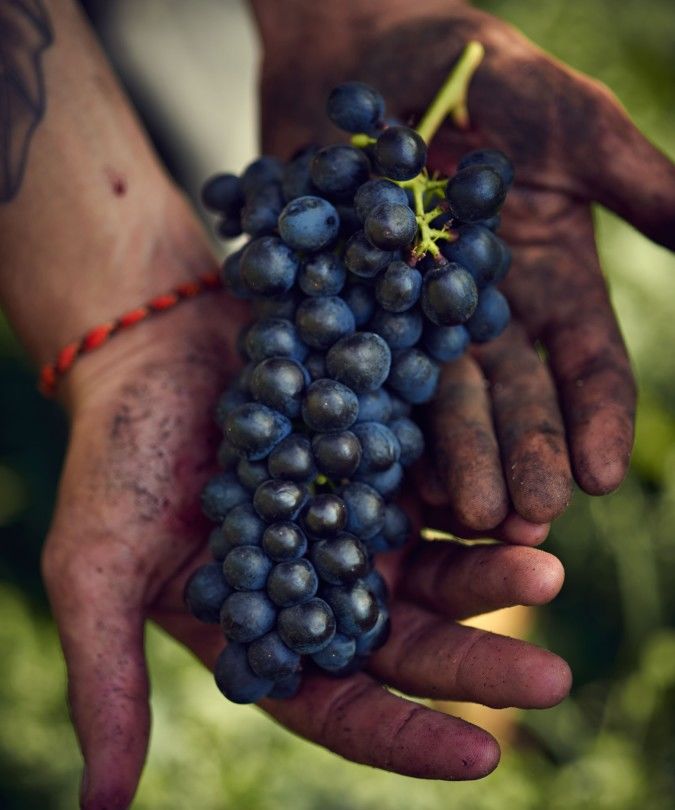They say you never forget your first love. Mine was a hedonistically rich, plump Barossa Shiraz, its palate packed with flavours of ripe dark berry fruits, baking spices and chocolate-tinged oak. I’m not alone in having succumbed to the lure of a big Aussie Shiraz, of course. Nearly a third of all Australian wines sold in the UK in 2020 were made from the grape, and it’s a fair bet that most of those were made in the opulent, generous style I fell in love with all those years ago. They were probably also drunk within a few months (or weeks, days or even hours) of purchase.
Over time, though, Australia’s big, bold, fruit-driven styles began to lose their appeal. I found myself seeking out wines with complexity and freshness rather than overt, fleshy charm – and it turns out that I wasn’t the only one. Over the course of the past couple of decades, an increasing number of Australian producers have been looking for ways to make wines with lower levels of alcohol and oak, notable levels of acidity and structure to withstand ageing, and fruit characters that encompass savoury elements, as well as bright fruit.

Although the most obvious manifestation of these stylistic changes has been in top-end Aussie Chardonnay, Shiraz has not gone unaffected. Changes in winemaking technique and a growing interest in site-specific, cool-climate viticulture have resulted in an increasing number of Aussie Syrahs that have more in common with the northern Rhône than they do with the Barossa – not least in their ability to age, gaining complexity and more nuanced character as they do so.

Arguably the first such wine to make an impact on the international scene was Clonakilla’s Shiraz/Viognier, a wine made from grapes grown in the hill country around Canberra. Over the course of the past couple of decades, this wine has won pretty much every award going, and is a staple of Langton’s prestigious classification system, one of 22 wines rated as ‘exceptional’. It has also been instrumental for many Australian winemakers in terms of the way they view a grape that was previously used mainly to produce full-throttle cuvées.
‘Tasting Clonakilla’s wines 20 years ago was a game-changer for me,’ says winemaker Nick Glaetzer. ‘It was Australia’s first foray into a different style of Shiraz – and I thought the wines just had such pretty aromatics.’ Although the tiny region of Canberra was the first to shift the paradigm towards cool-climate Syrah, these days you’ll find examples of the style being made right around Australia, particularly in Victoria, the Adelaide Hills and parts of Western Australia. Even Tasmania – an island best known for its sparkling wines, crisp Chardonnays and perfumed Pinots – is getting in on the act.

(Photo:Wine Australia)
Ironically enough, Glaetzer, the first winemaker to really put Tasmania on the map as a potential source of high-quality Syrah, comes from a family that might well be considered Barossa royalty. His ancestors were among the first recorded grape growers in the region, and his brother, Ben Glaetzer, makes one of the Barossa’s most sought-after Shiraz cuvées, Amon-Ra. Nick Glaetzer first came to public attention when his 2010 Mon Père Syrah, made from grapes grown in the south of Tasmania, won the Jimmy Watson Memorial Trophy, Australia’s premier wine prize. ‘Syrah is a really versatile variety, and it’s great for making wines that are lean, fresh and crisp, as well as the big wines that we’re famous for,’ says Glaetzer. ‘I still think Barossa Shiraz is wonderful, but I love the aromatics in the wines I make here in Tasmania. I love the spicy character, the white pepper and the meatiness.’

(Photo: Peter Mathew)
Donald Edwards, head sommelier at London’s Michelin-starred La Trompette, is not surprised that Glaetzer has had such success with the grape. ‘Almost anywhere in the New World where people grow Pinot Noir, Syrah is often more appropriate,’ he asserts. ‘Many of these areas are actually a little bit too warm for Pinot, while Syrah handles this kind of climate with ease. If the northern Rhône had had the following it now has, I think a lot more Syrah would have been planted when these New World areas were first prospected by winemakers.’ Even so, in terms of stylistic diversity and the sheer number of these wines being made, Australia can be considered ground zero for cool-climate Syrah. But other countries are now getting in on the act. In the US, some of the key areas to turn heads with a portfolio of savoury, peppery wines include the southern California AVAs of Santa Maria Valley and the Santa Rita Hills, as well as pockets of plantings in Sonoma. The style is also on the up in South Africa – Stellenbosch and Swartland, as well as coastal spots like Elgin and Walker Bay, are the places to watch.

Hawke’s Bay in New Zealand has its fans, too. ‘I think the Syrahs made in the region may well be one of the southern hemisphere’s great wine styles. The wines are truly magnificent,’ says Edwards. ‘There’s a generosity to them, and they can often be incredibly powerful, but they also have amazing levels of perfume – notes like camphor, myrrh and lavender. These are wines fit for eastern potentates.’ What all the key sources of the new-wave Syrahs tend to have in common are elements of geography or topography – ocean breezes or altitude – that help keep acidity high, alcohol low and also encourage the production of rotundone (the chemical component that lends these wines their tell-tale peppery aromas).
‘We love the wines because they have acidity and freshness, and we like the lower alcohol, too’ – Amy Christine MW
Amy Christine MW makes wine with her husband, Peter Hunken, in Santa Barbara County under the labels Holus Bolus and The Joy Fantastic. Part of the region’s draw for the couple is that Southern California’s hills run from west to east (unlike most of the state’s north–south ranges), funnelling cooling coastal winds through the sloping vineyards. Although Christine and Hunken work with a whole portfolio of grapes, the cool climate Syrah they produce in these hills is a particular passion. ‘We love the wines because they have acidity and freshness, and we like the lower alcohol, too,’ she says. ‘But the main reason we work with these vineyards is because they give us that pepper character that just blows off in warmer sites.’

It’s certainly true that the prevailing climate of many of these hilly or coastal zones can help produce the savoury, sinewy Syrahs favoured by aficionados of the style. But in many instances, nature can be given a helping hand by winemaking nous. ‘Although you need to have something specific about your terroir to ensure that your grapes don’t get overripe,’ acknowledges Catriona Felstead MW, one of the senior wine buyers at Berry Bros & Rudd, ‘you also have to want to make your wine in this kind of style. And that starts with decisions about picking dates.’ Christine agrees, adding that the grapes they grow in vineyard sites situated further inland in the California hills are usually picked earlier than those from the cooler coastal vineyards. ‘If we wait to pick, we lose site expression in these warmer zones, and we end up making a jammier style of Syrah,’ she says.
The inclusion of whole bunches (grapes that are not destemmed) in the fermentation tank can also help to add a little savoury note to a finished wine. It’s a fine balancing act, though: too much whole bunch can result in the creation of wines with a pronounced herbaceous character.

So cool is cool-climate Syrah that more than a handful of producers in warmer regions are doing their best to curb the exuberance of their wines, with varying degrees of success. For the moment, though, although savoury Syrah is a hot ticket for the wine trade, it’s yet to capture hearts and minds in a broader context. ‘There’s still a real demand for rich Australian Shiraz,’ says Stuart McCloskey, owner of The Vinorium, a UK-based specialist retailer of Australian wines. ‘And even though our customers tell us they want lighter, fresher wines, over 90% of our Shiraz sales in the UK are wines made in the traditional style.’

Glaetzer agrees, saying, ‘We’re okay with the style within Australia – there are enough people seeking that diversity. But internationally, Aussie Shiraz is still Grange or Hill of Grace. I think it’s going to take another 10 or 15 years before there’s widespread appreciation of cool-climate styles.’ Certainly that’s the case in South America, where producers have typically shown less interest in the style, and big, ripe, well-oaked Syrah remains the norm.
Christine, however, is more optimistic about the potential for people to fall in love with the wines she adores. ‘There will always be the guys who want to drink big, impressive bottles, but we’re seeing more and more people who are not only fatigued by powerful, expensive wines but are actively seeking out lighter, fresher styles,’ she says. ‘They might not be familiar with Syrah, but when they taste the wines, the response is usually, “Oh, my God, they’re so good.”’

This article was originally published in the spring/summer issue of Club Oenologique magazine, out now




















